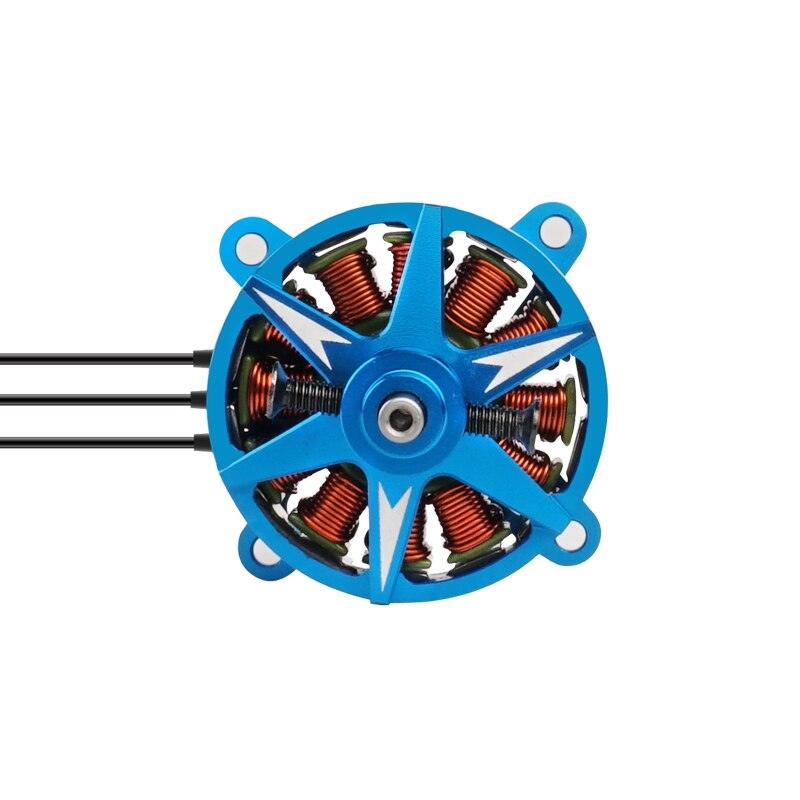
Motor Shaft: Evolution for Performance and Durability
Motor Shaft: Evolution for Performance and Durability
The motor shaft is a critical component of brushless motors, serving the essential purpose of securely mounting the propeller. Over time, motor shaft construction has undergone advancements to enhance performance and durability. This article explores the evolution of motor shafts and the different materials used in their construction.

1. Solid Aluminum Shafts:
In the earlier stages of brushless motor development, solid aluminum shafts were commonly used. These shafts offered lightweight characteristics, contributing to overall weight reduction in the motor. However, they had limitations in terms of stiffness and were more prone to bending under stress.
2. Hollow Titanium Shafts:
To address the drawbacks of solid aluminum shafts, manufacturers transitioned to using hollow titanium shafts. These shafts retained the benefits of being lightweight while significantly improving stiffness and resistance to bending. The hollow design reduced weight while maintaining structural integrity. However, the production process involved drilling a hole through the center of the shaft, resulting in increased manufacturing costs.
3. Hybrid Shafts:
In recent years, some motor manufacturers have introduced a hybrid shaft design, combining the strengths of steel and titanium. This innovative approach involves inserting a steel rod inside the hollow titanium shaft. The steel rod enhances stiffness and durability, while the titanium outer layer maintains the lightweight characteristics. The result is a hybrid shaft that provides superior performance and durability compared to previous designs.
Benefits of Hybrid Shaft Design:
The hybrid shaft design offers several advantages over traditional shaft constructions:
- Enhanced Stiffness: The inclusion of a steel rod significantly increases the stiffness of the shaft, minimizing flex and improving overall responsiveness.
- Improved Durability: The hybrid design combines the strength and resilience of steel with the lightweight properties of titanium, resulting in a shaft that can withstand greater stress and resist bending.
- Weight Optimization: The hybrid shaft design strikes a balance between strength and weight, ensuring that the motor remains lightweight while providing sufficient rigidity.
- Performance Benefits: A stiffer shaft reduces vibration and allows for more precise control, resulting in improved flight performance and stability.
It's important to note that motor shafts are available in different diameters, with M5 (5mm) being a common size for brushless motors used with 3″, 4″, 5″, and 6″ propellers. The material and design of the shaft can vary among different motor manufacturers.
Buy FPV Motor:
FPV Motor : https://rcdrone.top/collections/drone-motor
DJI Motor: https://rcdrone.top/collections/dji-motor
T-Motor Motor : https://rcdrone.top/collections/t-motor-motor
Iflight Motor : https://rcdrone.top/collections/iflight-motor
Hobbywing Motor : https://rcdrone.top/collections/hobbywing-motor
SunnySky Motor : https://rcdrone.top/collections/sunnysky-motor
Emax Motor : https://rcdrone.top/collections/emax-motor
FlashHobby Motor : https://rcdrone.top/collections/flashhobby-motor
XXD Motor : https://rcdrone.top/collections/xxd-motor
GEPRC Motor : https://rcdrone.top/collections/geprc-motor
BetaFPV Motor : https://rcdrone.top/collections/betafpv-motor
In conclusion, the evolution of motor shafts has led to the development of hybrid designs that combine the best characteristics of steel and titanium. These hybrid shafts offer superior stiffness, durability, and weight optimization, contributing to enhanced flight performance and reliability.